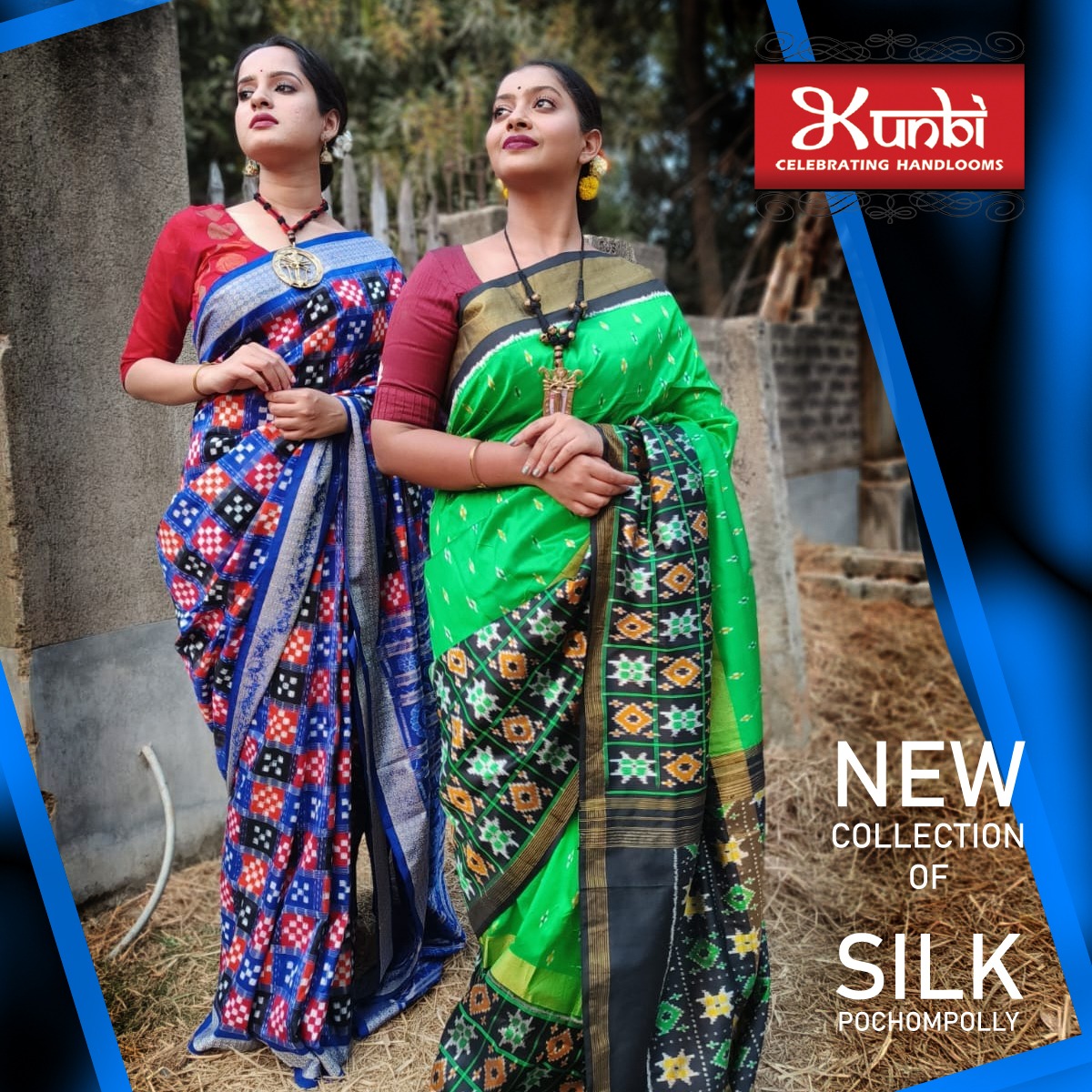saree at Kunbi

Saree - A Timeless Elegance from India
If you take a walk around the streets and localities of India, you will often find a woman draped in a saree. A saree is a long woven piece of cloth that ranges between the lengths of 5 yards to 7 yards. It is worn with a petticoat and blouse. Some tribal women wear a saree without a petticoat and blouse by simply draping it around their bodies.
There have been highly noticeable changes in fashion but the saree has stood the test of time! Saree is a timeless elegance which is as common as any other daily wear outfits. A saree not only makes a woman look beautiful but also represents the traditional values and culture of the Indian Subcontinent. A saree can be passed on a generation after the other as an heirloom. It can also be worn as a regular functional garment for everyday wear.
The origin of saree dates back to the time of Indus Valley Civilization in the Indian Subcontinent. The draping of the saree became popular at around 2800 to 1800 BCE. Cotton initially was commonly used to weave the sarees. With time, the styles of draping and use of other fabrics other than cotton to weave a saree started coming into practice.
Having an introduction about what sarees are, let us now know about the various types of sarees that women love to wear on the different occasions of their lives.
Pochampally Saree from Telangana
These sarees are designed with geometric patterns and motifs with little differences. Special Ikat style of dying is used to get the distinct ‘chowra’ patterns. Pochampally sarees are weaved in either silk or cotton.
The multicolored patterns of Pochampally sarees make them wearable at any occasion.
Jamdani Sarees from Bengal
Jamdani sarees originated in South Rupshi of Narayanganj district in Bangladesh are also widely available in West Bengal, India. These sarees have intricate handwoven patterns and are weaved with muslin cotton. In 2013, the traditional art of weaving Jamdani sarees was declared ‘Intangible Cultural Heritage of Humanity’ by UNESCO.
Jamdani sarees have been a favorite amongst Indian women since centuries. The intricate hand woven patterns are believed to express artistic thoughts and creativity of the weavers who try to tell stories through the patterns. These sarees were also patronized by imperial warrants of the Mughal Emperors.
Silk Patola Sarees from Gujarat, India
Patola sarees are usually woven with silk fabric and are a double ikat saree. These sarees have their origin in Patan, Gujarat, India.
Patola sarees are quite expensive and are mostly worn by the women of wealthy and royal families.
Bishnupuri Silk Saree from West Bengal, India
Also known as Baluchari sarees, Bishnupuri silk sarees originated in Murshidabad but at present they are mostly made in Bishnupur and its surrounding areas in West Bengal. These elegant sarees are famous for depicting mythological scenes on the pallu of the saree. In present times, Bishnupuri silk sarees depict exquisite patterns and pictures of other artistic imageries as well.
So here are some mentions about four elegant types of sarees in India. The country boasts of a lot of other varieties of sarees. The beauty of this outfit is timeless and is loved through centuries. So drape a saree in any occasion you like and let the yards make you feel beautiful!
 Chat with us
Chat with us